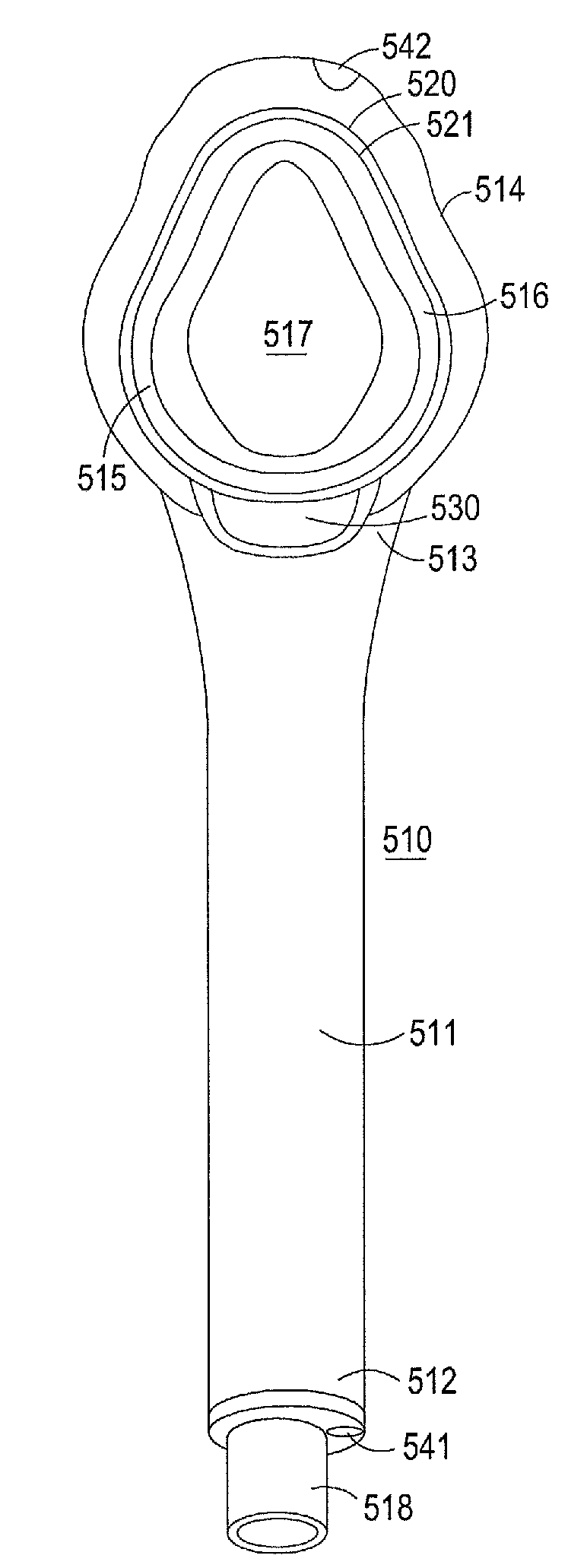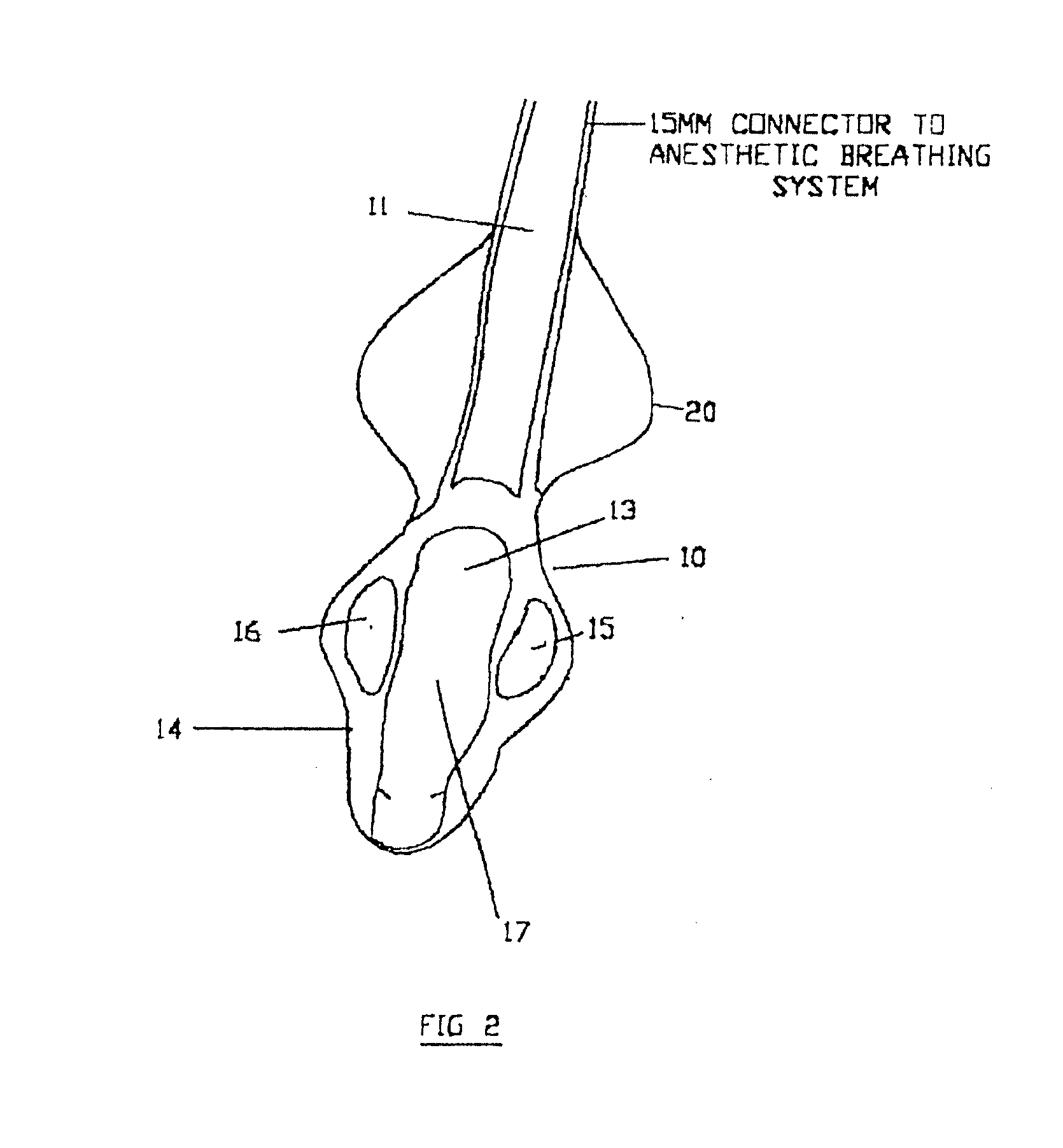Airway device
a technology of airway and spleen, which is applied in the field of spleen airway devices, can solve the problems of inability to effectively cough, direct or indirect mortality, significant and varying degrees of co-morbidity, etc., and achieve the effect of appealing and practical design
- Summary
- Abstract
- Description
- Claims
- Application Information
AI Technical Summary
Benefits of technology
Problems solved by technology
Method used
Image
Examples
Embodiment Construction
[0139]Embodiments of the present invention are described below by way of example only. These examples represent the best ways of putting the invention into practice that are currently known to the applicant although they are not the only ways in which this could be achieved.
[0140]Referring to FIG. 2, this illustrates the distal end of a mask device according to a first embodiment of the present invention, generally shown as 10. This comprises an airway tube 11, which at its proximal end 12 (not shown) terminates in a 15 mm or other connector suitable for connection to an anaesthetic breathing system of conventional type. Formed around the distal end 13 of the airway tube is a laryngeal cuff or cup 14 adapted in its shape and contours to correspond with the larynx inlet region of a patient. In this context the terms cuff and cup have an equivalent meaning. They refer to the element of the device at the distal end of the airway tube that is adapted to cover and form a seal with the la...
PUM
| Property | Measurement | Unit |
|---|---|---|
| Shore hardness | aaaaa | aaaaa |
| pressure | aaaaa | aaaaa |
| pressure | aaaaa | aaaaa |
Abstract
Description
Claims
Application Information
 Login to View More
Login to View More - R&D
- Intellectual Property
- Life Sciences
- Materials
- Tech Scout
- Unparalleled Data Quality
- Higher Quality Content
- 60% Fewer Hallucinations
Browse by: Latest US Patents, China's latest patents, Technical Efficacy Thesaurus, Application Domain, Technology Topic, Popular Technical Reports.
© 2025 PatSnap. All rights reserved.Legal|Privacy policy|Modern Slavery Act Transparency Statement|Sitemap|About US| Contact US: help@patsnap.com



